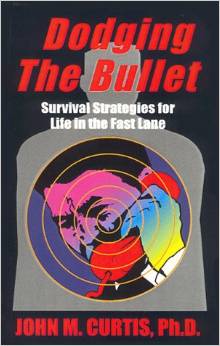Wall Street got doused with cold water with 70-year-old Federal Reserve Board Chairman Janet Yellen hiking the federal funds rate from 0.50% to 0.75%, the only rate hike in 2016 and second hike since Dec. 17, 2008. Yellen’s modest 25-basis points increase signals another three comparable rate hikes in 2017, sending shockwaves through Wall Street. Raining on the so-called Christmas rally, investors are forced to take a breather from what former Fed Chairman Alan Greenspan called “irrational exuberance.” Yellen’s calculation involves many factors, primarily the current 4.7% unemployment rate, but, more importantly, the inflation rate approaching the fed’s target of 2%. “In view of realized and expected labor market conditions and inflation, the Committee decided to raise . . . the fed funds rate,” wrote the Central Bank, justifying today’s rate hike.
President-elect Donald Trump criticized Yellen’s Open Market Committee for hiking rates too slowly, putting a drag on U.S. Gross Domestic Product. Only a week before the election Oct. 30, U.S. GDP growth rose to 2.9%, vindicating President Barack Obama’s economy. With Yellen poised for at least three more hikes in 2017, it almost certainly sucks the life out the today’s bull market. Closing at 18,363 on Election Day Nov. 8, the Dow closed today at 19,792, after losing 118 points from yesterday’s close at 19,910. Whatever expectations Yellen has for an improving economy, it could all collapse if Wall Street starts what many analysts expect, a major correction. Despite the high hopes from Trump’s economic plans, many economists have been predicting recession in 2017. Yellen’s optimistic rate hike today could wind up tomorrow’s rate cut if Wall Street sharply declines.
Trump said repeatedly that the 5% unemployment number doesn’t take into account the Labor Participation rate, where many workers have given up on finding a job. Trump’s plans to return manufacturing, or at least keep it from leaving the states, might not happen, especially if he starts tariffing companies for leaving the U.S. Trump’s plan to tariff companies like Ford Motor Co. for manufacturing in Mexico could backfire, creating a trade war with the U.S. Yellen’s expectations about continued GDP growth are all contingent on a robust stock market, not at unsustainable levels since Trump claimed victory Nov. 8. Yellen’s inflation number of 2% is dependent on consumer spending, something that won’t happen if the stock market heads south. Any prolonged sell off could plunge the nation into recession, putting a real dent on consumer spending and GDP growth.
Using the Consumer Price Index as a measure of inflation, Yellen found CPI running at about 2.1% or about 0.6% above the actual inflation rate of 1.4%. Yellen sees inflation has “increase since earlier in the year,” justifying today’s 0.25% rate hike. Consumer borrowing costs, including credit cards and home equity lines, are expected to go up, discouraging consumers from more borrowing. Expecting GDP growth to rise to 2.1% in 2017, Yellen sees further drops in the unemployment rate to 4.5% by 2019. Yellen expects the federal funds rate to rise to 3% by 2018, something that would increase the Prime Interest rate to 5.75%, discouraging consumer spending. Yellen hopes her rate hike provides rational growth expectations to the market but could do exactly the opposite. While the Fed claims it pays no attention to the stock market, today’s rate hike sends a loud signal to Wall Street.
Calling the bull market in 1998 under former President Bill Clinton “irrational exuberance,” Greenspan knew that rate hikes would throw cold water on the stock market. While rate hikes didn’t sink Wall Street in 1998, they led to one of the biggest market crashes since the Great Depression in 2000. If Wall Street reacts harshly to Yellen’s expected rate hikes, it could throw a monkey wrench into her plans for continued GDP growth and inflation. Wall Street’s “irrational exuberance” created the conditions for renewed inflation, not, as Yellen suggests, lower unemployment. Despite a bad year for hedge funds, that largely bet against the market, most mutual, private equity and sovereign wealth funds posted strong gains in 2016. With the U.S. Treasury expected to collect better-than-expected capital gains revenue, it should hold the 2016 U.S. budget deficit to under $550 billion.
Yellen didn’t consider the economic impact of repealing-and-replacing Obamacare in 2016. With Obamacare subsidies slated to go on the balance sheet in 2017, it could double the U.S. budget deficit, forcing the Congress into more austerity. Any major correction on Wall Street could also show government revenue growth, adding to federal budget deficits and more increases in the national debt ceiling. Once Trump is sworn in Jan. 20, 2017, the GOP-controlled Congress won’t be the mood of spending more, driving the nation into more debt. Trump might watch his ambitious infrastructure plans evaporate, as the government deals with g rowing deficits and prospects of more debt. With the economy still running at 1.4% GDP growth, it’s premature for Yellen to start projecting future rate hikes. If Wall Street heads south in 2017, recession still looms large.



